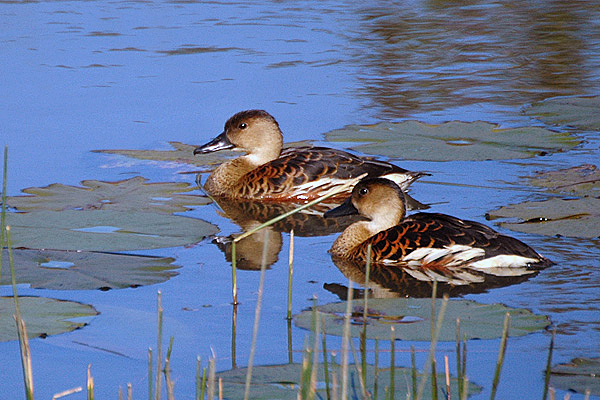Adelaide And Mary River Floodplains Important Bird Area on:
[Wikipedia]
[Google]
[Amazon]
 The Adelaide and Mary River Floodplains are a region comprising the adjoining
The Adelaide and Mary River Floodplains are a region comprising the adjoining
 The Adelaide and Mary River Floodplains are a region comprising the adjoining
The Adelaide and Mary River Floodplains are a region comprising the adjoining floodplain
A floodplain or flood plain or bottomlands is an area of land adjacent to a river which stretches from the banks of its channel to the base of the enclosing valley walls, and which experiences flooding during periods of high discharge.Goudi ...
s of the Adelaide
Adelaide ( ) is the capital city of South Australia, the state's largest city and the fifth-most populous city in Australia. "Adelaide" may refer to either Greater Adelaide (including the Adelaide Hills) or the Adelaide city centre. The dem ...
and Mary Rivers in the Top End
The Top End of Australia's Northern Territory is a geographical region encompassing the northernmost section of the Northern Territory, which aside from the Cape York Peninsula is the northernmost part of the Australian continent. It covers a ra ...
of Australia’s Northern Territory
The Northern Territory (commonly abbreviated as NT; formally the Northern Territory of Australia) is an Australian territory in the central and central northern regions of Australia. The Northern Territory shares its borders with Western Aust ...
. It lies east of the city of Darwin and west of Kakadu National Park
Kakadu National Park is a protected area in the Northern Territory of Australia, southeast of Darwin. It is a World Heritage Site. Kakadu is also gazetted as a locality, covering the same area as the national park, with 313 people recorded liv ...
and the Alligator Rivers
Alligator Rivers is the name of an area in an Arnhem Land region of the Northern Territory of Australia, containing three rivers, the East, West, and South Alligator Rivers. It is regarded as one of the richest biological regions in Australia, ...
IBA, where the rivers flow northwards through seasonally inundated tropical
The tropics are the regions of Earth surrounding the Equator. They are defined in latitude by the Tropic of Cancer in the Northern Hemisphere at N and the Tropic of Capricorn in
the Southern Hemisphere at S. The tropics are also referred to ...
lowlands into the Van Diemen Gulf
Van Diemen Gulf is a gulf in the Northern Territory of Australia. It connects to the Timor Sea in the north via Dundas Strait. Most of its area is also gazetted as a locality with the name Van Diemen Gulf. History
The gulf was named after th ...
.
Birds
The floodplains have been identified by BirdLife International as an Important Bird Area (IBA) because they support over 1% of the world populations of several species ofwaterbird
A water bird, alternatively waterbird or aquatic bird, is a bird that lives on or around water. In some definitions, the term ''water bird'' is especially applied to birds in freshwater ecosystems, although others make no distinction from seabi ...
s, including magpie geese
The magpie goose (''Anseranas semipalmata'') is the sole living representative species of the family Anseranatidae. This common waterbird is found in northern Australia and southern New Guinea. As the species is prone to wandering, especially w ...
(up to 800,000), wandering whistling duck
The wandering whistling duck (''Dendrocygna arcuata'') is a species of whistling duck. They inhabit tropical and subtropical Australia, the Philippines, Borneo, Indonesia, Papua New Guinea and the Pacific Islands.
Taxonomy
There are three subsp ...
s (188,000), pied herons (2000), red-necked avocet
The red-necked avocet (''Recurvirostra novaehollandiae'') also known as the Australian avocet, cobbler, cobbler's awl, and painted lady, is a wader of the family Recurvirostridae that is endemic to Australia and is fairly common and widespread t ...
s (3000), little curlew
The little curlew (''Numenius minutus'') is a wader in the large bird family Scolopacidae. It is a very small curlew, which breeds in the far north of Siberia. It is closely related to the North American Eskimo curlew.
The word "curlew" is imit ...
s (12,000), Far Eastern curlew
The Far Eastern curlew (''Numenius madagascariensis'') is a large shorebird most similar in appearance to the long-billed curlew, but slightly larger. It is mostly brown in color, differentiated from other curlews by its plain, unpatterned brown ...
s (1050), and sharp-tailed sandpiper
The sharp-tailed sandpiper (''Calidris acuminata'') (but see below) is a small wader.
Taxonomy
A review of data has indicated that this bird should perhaps better be placed into the genus ''Philomachus''
– as ''P. acuminatus'' – which now ...
s (2500). There are large breeding colonies containing 30,000 mixed waterbirds, significant numbers of bush stone-curlew
The bush stone-curlew or bush thick-knee, also known as the Iben bird (''Burhinus grallarius'', obsolete name ''Burhinus magnirostris'') is a large, ground-dwelling bird endemic to Australia. Its favoured habitat is open plains and woodlands, whe ...
s and 11 species that either have restricted ranges or are confined to savanna
A savanna or savannah is a mixed woodland- grassland (i.e. grassy woodland) ecosystem characterised by the trees being sufficiently widely spaced so that the canopy does not close. The open canopy allows sufficient light to reach the ground to ...
biome
A biome () is a biogeographical unit consisting of a biological community that has formed in response to the physical environment in which they are found and a shared regional climate. Biomes may span more than one continent. Biome is a broader ...
s.
References
Rivers of the Northern Territory Important Bird Areas of the Northern Territory Wetlands of the Northern Territory Floodplains of Australia {{NorthernTerritory-river-stub